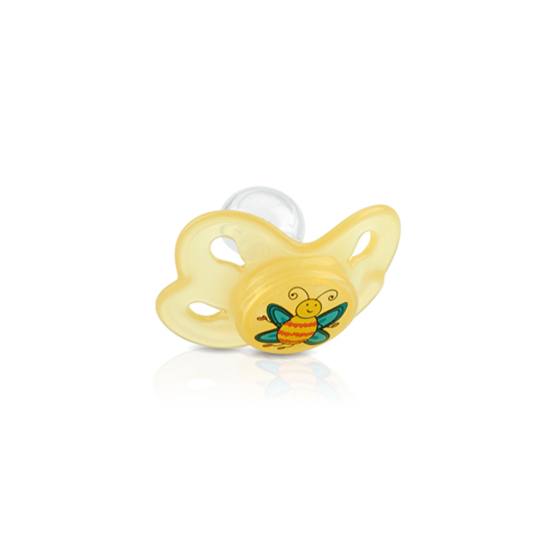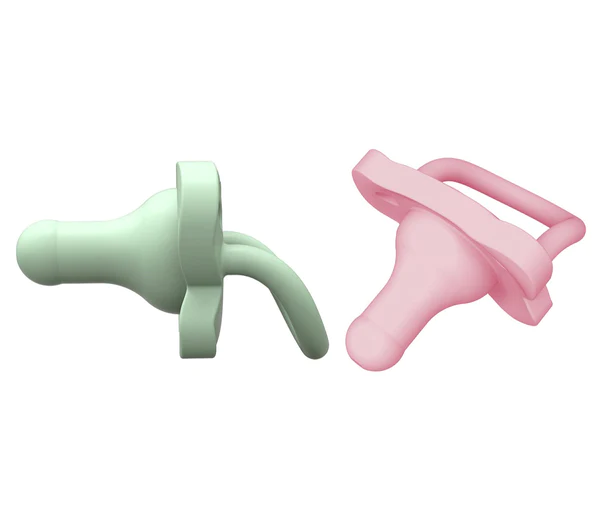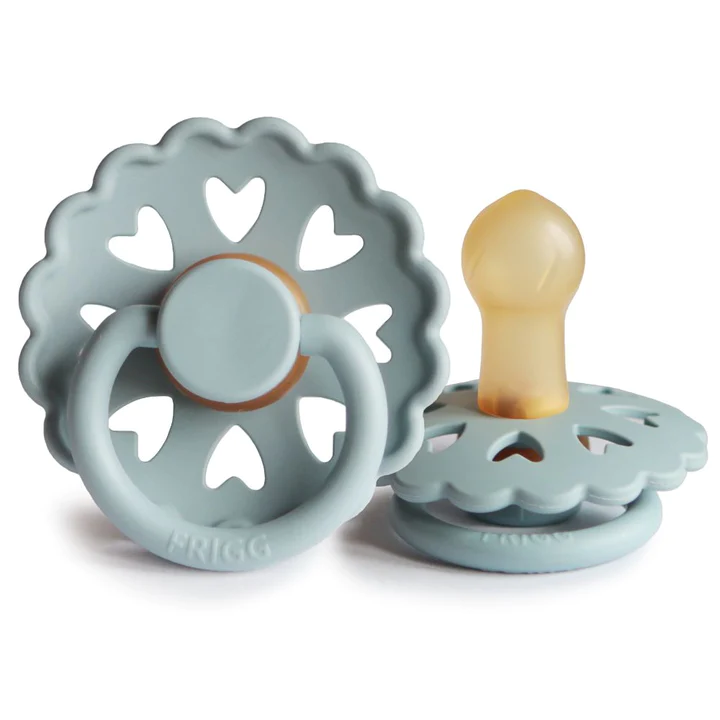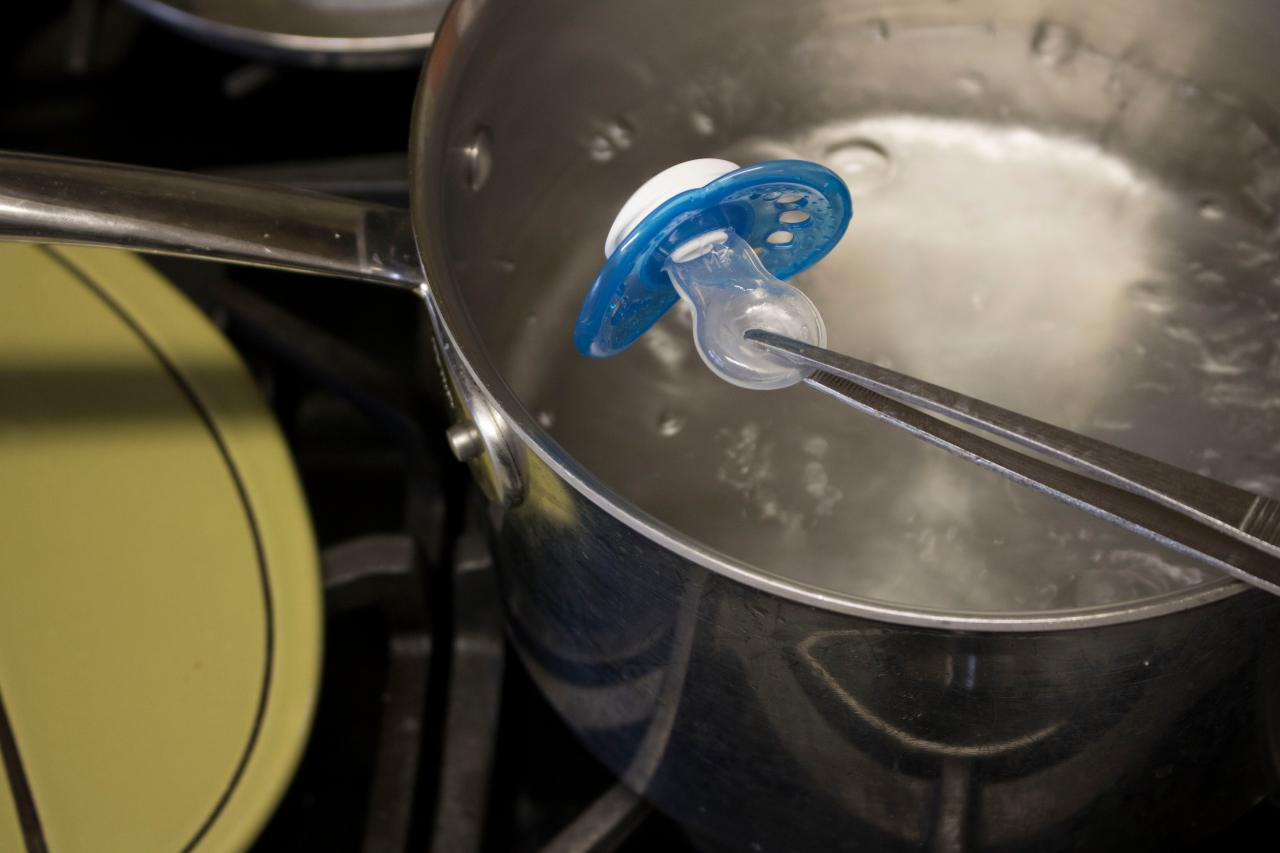What is a Rubber Pacifier?
A rubber pacifier resembles the shape of a nipple. Most pacifiers use silicone or natural rubber as the base material. They have a lot of benefits for babies, which help soothe them or even keep them distracted. Moreover, pacifiers come in different shapes, styles, and types.
You must know the ins and outs if you are in the market for this product. For instance, the different shapes, materials, and pros and cons. Once you know everything, you will realize the potential of this product. It is used worldwide by parents for babies regularly.
Shapes of Rubber Pacifier
Pacifiers have nipples that come in a variety of shapes. Each shape serves a different purpose. These include:
Cylindrical Shape

This pacifier shape has a slightly wide bottom. As a result, this becomes the perfect place for the baby’s lips to rest. Hence, often babies that breastfeed prefer cylindrical-shaped pacifiers.
Cherry Shape
Cherry-shaped pacifiers also offer a similar experience to breastfeeding. This is because it allows the baby’s tongue to cup around the nipple. However, unlike the cylindrical pacifier, this does not have a wide bottom for the lips to rest on.

Butterfly Shape
The butterfly-shaped pacifier has the most expansive bottom. As a result, it comes down to your baby’s preference whether they want such a broad base.

Orthodontic Shape
This orthodontic pacifier has a beveled side similar to how a lipstick tube looks. Moreover, orthodontic pacifiers have unique features and are often made using medical-grade silicone nipples.

What Should You Choose for Your Need?
Ideally, if your baby breastfeeds, you must start by offering them a cylindrical-shaped pacifier. In the case of the baby objects, chances are the cherry-shaped pacifier will please them. However, if both don’t work, you can try the remaining two shapes. After all, it all comes down to comfort and what the babies prefer.
Is Rubber Pacifier Safe?
Yes, pacifier rubber is safe. However, you have to make sure you check the rubber material and the grade. For instance, 100% natural rubber is undoubtedly safe for babies. However, other rubber materials, such as silicone, are also used to make pacifiers. In that case, you must ensure that the silicone used by the manufacturer is either food-grade or medical-grade.

All in all, manufacturers only use safe rubber materials for pacifiers. However, if you want to be extra cautious, make sure you have some knowledge about rubber materials.
What Rubber Material Should I Choose?
Pacifiers typically come in two materials: natural rubber and synthetic silicone. We will look at each material separately:
Silicone:
Only Food-grade silicone or medical-grade is used to produce pacifiers. Moreover, good-quality silicone contains no toxicants making it safe for babies. However, it would be best if you stayed wary of manufacturers who use low-quality silicone. Why? Because low-quality silicone contains traces of toxic metals such as lead.

Moreover, silicone pacifiers also last longer than natural rubber pacifiers. As a result, you can sell them based on longevity. However, one thing to remember is that the longer it is used, the more it degrades.
Hence, we always recommend replacing a silicone pacifier once you start seeing cracks. This can lead to choking hazards if not done at the right time. Also, try to keep silicone pacifiers away from the dishwasher, as frequent sterilization reduces their life.
Additionally, a good manufacturer always recommends replacing a silicone pacifier within 4-6 weeks depending upon use. Also, a drawback of silicone is that it is not eco-friendly. As a result, unlike natural rubber, silicone doesn’t biodegrade, which proves harmful to the environment.
Natural Rubber:
Natural rubber is undoubtedly the better material choice of the two. But how? Well, for starters, natural rubber does not contain any toxicants. Moreover, natural rubber tends not to harm the environment as much as silicone.

As for the source, natural rubber comes from the Hevea Brasiliense tree latex. Moreover, all-natural rubber pacifiers do not contain any chemical additives. As a result, this further makes them safer for babies and makes for a good selling point.
You can also distinguish between natural rubber and silicone pacifiers based on color. This is because natural rubber pacifiers have a dull yellow shade to them.
Also, please note that the average life for a natural rubber pacifier ranges between 6-8 weeks. Over time, these tend to become sticky and soft. Thus, it is time for a replacement if you see these signs. You also must ensure the baby does not have a latex allergy when using natural rubber.
Is Natural Rubber Or Silicone Better for a Pacifier?
This a question that almost every business in this niche comes across. The answer isn’t simple, so we have made a thorough comparison based on several factors. While silicone and natural rubber have benefits and properties, one does better in certain areas. Let’s have a look:

Durability:
Regarding durability, silicone tends to perform better in natural conditions. This includes better resistance to UV light, heat, saliva, etc. As a result, your food-grade silicone pacifier will withstand normal conditions better.

However, the silicone pacifier’s sturdiness comes at one cost: softness. This is where natural rubber wins since the material has a softer texture.
Replacement:
Even though a natural rubber baby pacifier can last a week or two longer than silicone pacifiers, all manufacturers recommend pacifier replacement within 4-6 weeks. This is regardless of the material. Hence, it would be best if you always considered the condition of the pacifier when it comes to replacement.
Material:

Natural rubber originates from a tree’s latex when talking about the material. Contrarily, silicone is synthesized on an industrial level using rubber vulcanization and other methods. On top of it, the silicone specifically used for pacifiers has no harmful ingredients since it falls under the food-grade silicone category.
Texture:
Natural rubber latex pacifiers have a softer texture. As a result, this closely resembles the mother’s breast making it a more suitable choice for babies. Hence, you should always start with a natural rubber baby pacifier, mainly if the baby is used to breastfeeding. However, some babies also prefer the slightly harsh feel of silicone pacifiers.
Allergies:

If your baby has a natural latex allergy, nothing can save it from a natural rubber pacifier. As a result, you would be bound to use silicone pacifiers since it reduces the threat of rare latex allergy.
Taste:
The natural rubber has a rubber-like taste and odor. However, silicone, on the other hand, has no odor or taste. Which one is better depends on what the baby prefers. Generally, odorless and tasteless silicone works better in most markets.
Maintenance:
Lastly, maintenance for both materials differs. For instance, natural rubber must not be sterilized in the microwave because it cannot resist extreme temperatures. However, you can put it in boiling water for five minutes to clean it properly.
Contrarily, silicone tends to handle temperature better than natural rubber. As a result, you can microwave sterilize it or even put it in boiling water to eliminate any unwanted bacteria or germs.
Benefits of Pacifiers
Pacifiers have tons of benefits for babies. However, we won’t just look at the help in this section. Instead, we will also shed some light on the cons of pacifiers so that you know how to utilize them properly or better instruct your customers regarding usage.

Pros
- Rubber pacifiers help soothe crying babies. Moreover, it also helps them fall asleep.
- Also, pacifiers may reduce the risk of sudden infant death syndrome (SIDS) by promoting better breathing and airflow.
- Pacifiers can help calm a baby during medical procedures or while traveling on an airplane.
- Rubber pacifiers can provide security and comfort to babies and young children.
- Pacifiers may help babies self-soothe and calm themselves down when upset or restless.
Cons
- Pacifiers may interfere with breastfeeding if they are used excessively or if they are introduced too early. Therefore, submit them at the right age.
- Prolonged use of pacifiers can cause dental problems, such as misalignment of the teeth.
- It can also be a choking hazard if they are not used properly.
- Pacifiers can contribute to ear infections if they are used excessively or if they are not cleaned properly.
- Rubber pacifiers can cause a baby to swallow too much air, leading to gas and discomfort.
- It can interfere with a child’s natural sucking reflex and development, affecting their ability to latch onto a bottle or breast.
- Some children may become dependent on pacifiers and have trouble giving them up later.
- Some children may prefer the pacifier over other forms of comfort, such as cuddling or being held.
- Babies also tend to misplace or lose pacifiers. This often
Pacifier Safety Tips And Considerations
Keeping the following safety tips and considerations in mind when using a pacifier for babies is vital. We always recommend businesses promote these guidelines to their customers as well:

- Make sure the pacifier is the right size for your baby. A pacifier that is too small can be a choking hazard, as it can become lodged in your baby’s throat. A pacifier that is too large can cause mouth injuries, as it may not fit appropriately in your baby’s mouth.
- Check the pacifier regularly for wear and tear. Pacifiers can become damaged through regular use, such as when dropped or chewed on. If the pacifier is damaged, discard it and get a new one to ensure that your baby uses a safe and functional pacifier.
- Do not tie the pacifier around your baby’s neck or attach it to their clothing with a ribbon or string. This can cause strangulation, as the pacifier can become caught on something and tighten around your baby’s neck.
- Do not dip the pacifier in sweet substances like honey or sugar water. This can increase the risk of tooth decay, as the sweet substances can promote the growth of harmful bacteria in your baby’s mouth.
- Forcing a pacifier on your baby is never a good idea. If your baby has no interest in using a pacifier, do not try to force them to use it. Respect their wishes and find other ways to help them soothe themselves.
- Supervise your baby while they are using a pacifier. Keep an eye on your baby while using the pacifier to ensure they do not choke or suffer any other injuries.
- Consider weaning your baby off the pacifier after they reach the age of 2 or 3. Prolonged pacifier use can cause dental problems, such as misaligned teeth or an improper bite. Weaning your baby off the pacifier at a young age can help prevent these issues.
Conclusion
Births take place in thousands every day. The pacifier market has a high demand. Hence, it would help if you had a reliable supplier offering good-quality products. As for the material and shape, we have already discussed everything. Ensure you also read the pros and cons and forward these to your customers.
Want A Reliable Supply of Safe Pacifiers? Hongju Can Help You!
At Hongju, we source the best-in-class raw materials for pacifiers. As a result, our products are entirely safe for use. You can also customize the orders per your audience’s needs and demands. Moreover, we also offer product prototyping. Get in touch today!